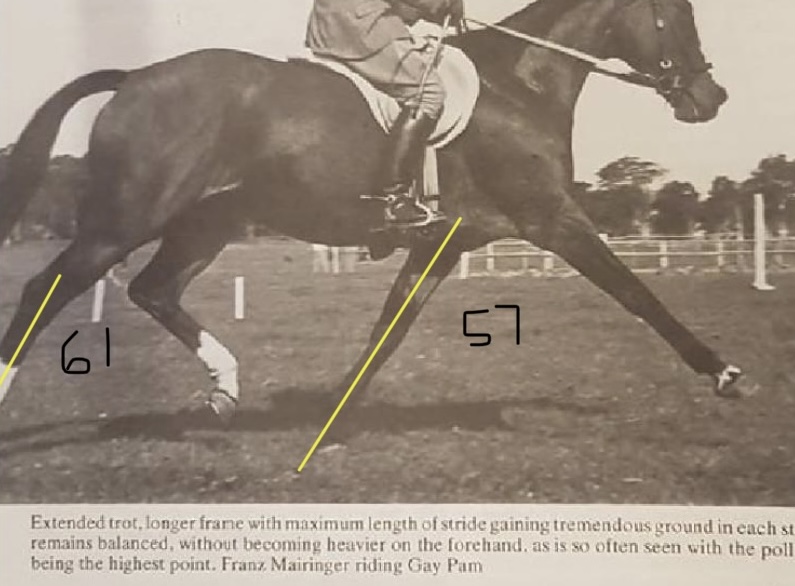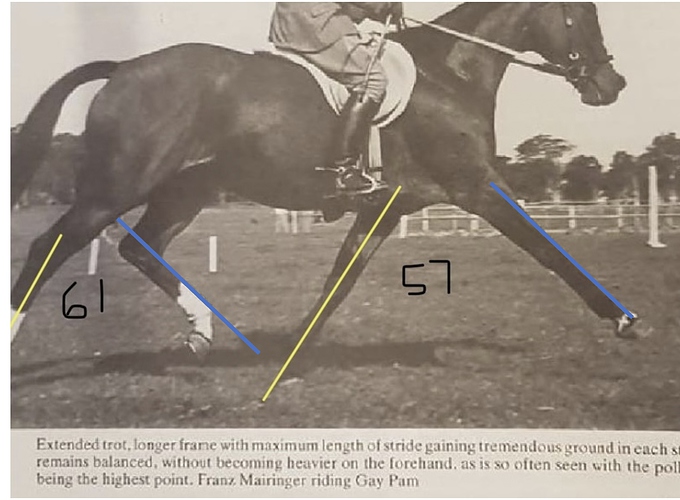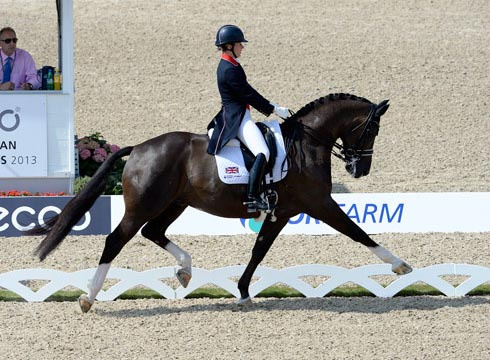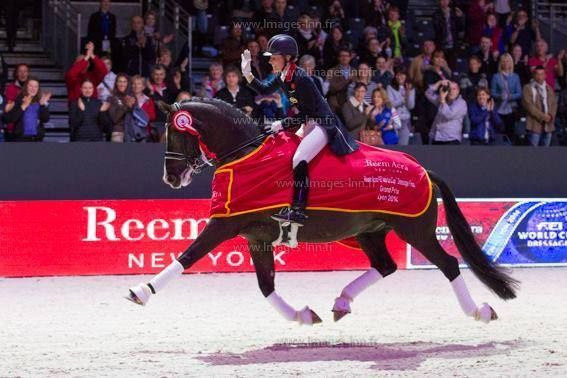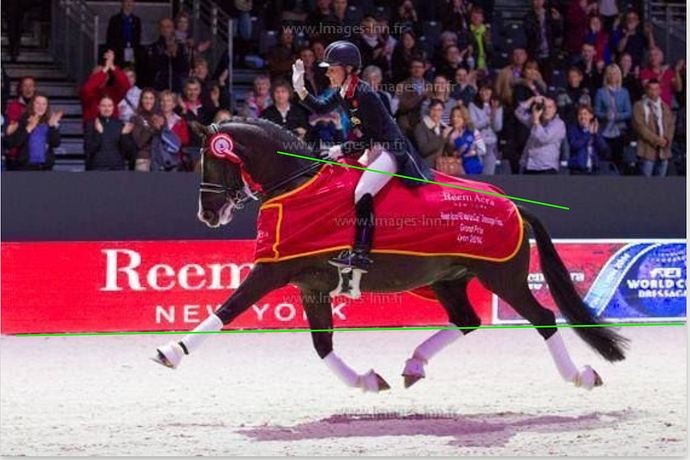Technical question. This photo is said to be a great example of the extended trot. I agree it’s much better than a lot of the ones you see nowadays (the entire body extends, including the head/neck/nose). However, I’m speculating that that inside hind leg is already coming off the ground, while the outside front is still fully loadbearing. This would mean the horse is in a state of negative DAP (diagonal advanced placement), where the front leg lands before the hind leg, putting the horse on the forehand. If this is true, the front leg is taking a lot of stress with it being the only one on the ground at this point!
What do you guys think? Is the inside hind leg on the ground or is it not?
Someone told me that as long as the angles of the hind legs matched the angles of the front, it is a correct trot. However, this one, if you really do the math, is somewhat close but still off by 4 degrees.
Thoughts?
(Also if anyone has the complete photo showing the entire hind leg, that would be great to see!)

